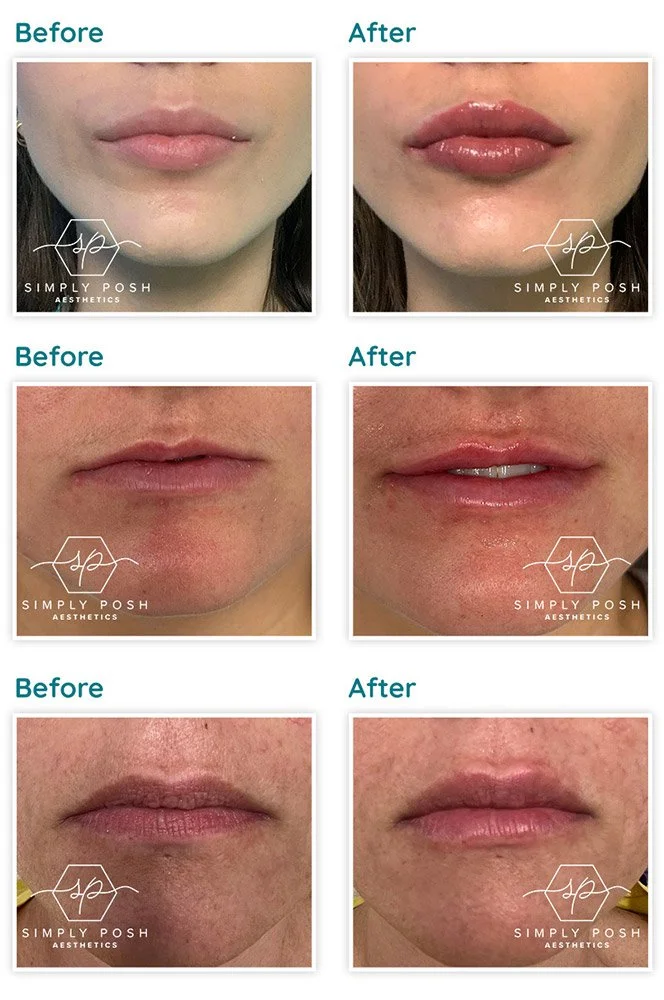
Dermal Fillers
There's no doubt that dermal fillers are one of the most popular cosmetic procedures out there. After all, who doesn't want to look younger and more refreshed? But what exactly are dermal fillers and how do they work?
Some tidbits of science
Hyaluronic Acid (HA) is a sugar naturally produced by the body that retains moisture in the skin. The main ingredient in dermal fillers is a modified form of HA. Dermal fillers such as Revanesse® Versa™+, Juvéderm®, and Restylane®, temporarily restore volume loss in certain areas of the face for long-lasting, natural-looking results. Common areas that are treated are the lateral cheeks, nasolabial folds (smile lines), lips, jawlines, nose, chin, and hands.

Revanesse® is a line of hyaluronic acid (HA) dermal fillers made with state-of-the-art production methods, optimal ingredients, and rigorous quality testing to provide remarkable results. Revanesse® fillers add volume for a smoother, more youthful appearance while shaping and sculpting your features to your ideal of beauty. With over 5.5 million syringes sold worldwide, Revanesse® is reshaping the aesthetic experience in over 80 countries around the globe.
Its unique formulation, developed and manufactured in small batches with rigorous quality control in a state-of-the-art facility, is optimized for versatility to produce the results you want—your look, your way. Revanesse® dermal fillers are designed for minimal pain, swelling, and downtime.
Restylane® is a safe, gentle, FDA-tested dermal filler that contains no animal products and is therefore highly tolerated by clients that typically suffer from allergies. Laugh lines, nasolabial folds and tear troughs at the inner eye all respond exceptionally well to Restylane®, and as volume and suppleness are generously returned to these hard-to-reach facial areas, clients gradually regain a youthful glow. The key ingredient in Restylane® is hyaluronic acid, an all-natural compound found in the human body that replenishes, rejuvenates, and hydrates the skin.
Restylane® is used with local anesthesia, followed by a soothing ointment post injection. Other than a light tingling sensation, patients may not experience side effects and can return to their normal activities immediately following the procedure. Results from Restylane® can be visible right away, and could continue to please for up to 12 months.
JUVÉDERM® has enjoyed immense worldwide popularity, and is known internationally as among the best “liquid facelifts” on the market. It is especially effective in treating marionette lines, oral commissures, and nasolabial folds. Fueled by hyaluronic acid, a naturally occurring substance that naturally bonds with elastin and collagen to deliver volume to the skin, reinvigorate sagging, depleted skin tissue, JUVÉDERM® can deliver spectacular results for up to 12 months. It is approved for all skin tones and textures, and requires no downtime for recovery.
After the skin is prepped with a local numbing agent and thoroughly cleaned, injections typically take about 15 minutes, with minimal side effects. Patients can return to work, school or exercise on the same day as the procedure.
Are you ready to take control of your beauty goals? Whatever you choose: your beautiful unique, expressive face is safe in our hands.
Gallery
FAQs
-
You should not be treated if you:
• Are pregnant or breastfeeding, as the safety of these products for use during pregnancy, or in women who are breastfeeding, has not been studied
• Have a history of hypertrophic scarring or keloid formation
• Have evidence of scars at the intended treatment sites
• Have acne and / or other inflammatory diseases of the skin, such as rosacea, seborrheic dermatitis, and psoriasis,
• Have allergic history including: severe allergic reactions (anaphylaxis), heightened immune responses to common allergens, especially inhaled allergens and food allergens (atopy), allergy to hyaluronic acid products, allergy to lidocaine, Streptococcal proteins or have plans to undergo administration of graded doses of allergens (desensitization therapy) during treatment.
• Have acute or chronic skin disease, such as seborrheic dermatitis or rosacea, in or near the injection sites, or any infection or unhealed wound of the face
• Are under concomitant anticoagulant therapy, antiplatelet therapy, or have a history of bleeding disorders, clotting disorders such as hemophilia or connective tissue disorders such as systemic lupus erythematous
-
Each client will undergo a thorough cosmetic evaluation discussing anatomy as well as goals and expectations. Prior to treatment the area(s) to be injected will be numbed with topical anesthetic to make the procedure more comfortable. This is not a surgical treatment. Most procedures are completed within 30 minutes or less.
-
The most common reported side effects are bleeding, bruising, swelling, and pain.
Other risks that are less likely, but may occur, include: Acne-like skin eruptions, skin sensitivity (rash, itching, tenderness), skin infection, damage to nerves or blood vessels, skin lumpiness, scarring, skin necrosis, hyperpigmentation, reactivation of herpes infection (blisters or skin sores).
If you have an adverse reaction or side effect that persists for one week or more after treatment with a Revanesse® dermal filler, please contact your healthcare provider.
Warning: One of the risks of being injected with any dermal filler is unintentional injection into a blood vessel. These complications, which have been reported with facial injectable fillers, can include vision abnormalities, blindness, stroke, temporary scabs, or permanent scarring of the skin.
-
No. Prior to treatment the area(s) to be injected will be numbed with topical anesthetic to minimize discomfort.
-
Patients are encouraged to limit the amount of alcohol and medications which can increase bruising (i.e. Advil, Tylenol, Fish Oil).
-
Anyone over the age of 21 can have fillers. Some people choose to get them as soon as they can, while others prefer to focus on preventative skincare and wait until their 40s or older before having injectables. The 40s are when most people begin to see more pronounced wrinkles along with a loss of elasticity in the skin. This is why many people choose to have injectables at this time.
-
The dermal fillers that are used in our practice have naturally-occurring ingredients such as hyaluronic acid. Therefore, there is no need for allergy testing before dermal filler treatment (other than collagen) and most patients over 21 are excellent candidates for this cosmetic solution to aging and other facial concerns.
-
Neuromodulators and dermal fillers are all categorized as wrinkle-reducers. However, their action in dermal tissue is completely different. Neuromodulators are the wrinkle-reducers that are commonly used in the uppermost areas of the face, those that develop wrinkles as a result of facial movement. Neuromodulators are ideal for these dynamic wrinkles because their action is to bind to nerve receptors in muscle tissue to prevent the uptake of specific chemicals that cause contraction. Dermal fillers, on the other hand, adhere to water molecules in the subcutaneous tissue beneath the epidermis to plump superficial layers of the skin.
-
Dermal fillers are long-lasting, renewing the skin for up to two years. However, they do degrade over time. Treatment may be repeated every few months to years to soften the signs of aging.
-
Dermal fillers and neuromodulator treatments, such as Botox, can and often are administered during the same office visit. Because each product works differently in the skin, the two can be a powerful combination to achieve beautiful, natural-looking rejuvenation.






